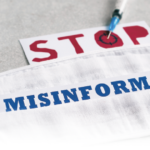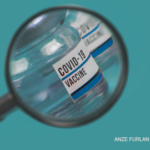Vaccines 101
Chicken farms are a key component of our national security strategy. Scattered across the U.S. in top secret locations, chickens are being guarded by the federal government.
I wish I were kidding.
In 2001, during an avian flu scare, the federal government came to the uncomfortable realization that we had no domestic source of influenza vaccine. Routine, childhood vaccines have a predictable market, but there’s no money to be made in preparing for an influenza pandemic that may not come. So the federal government stepped in. In an influenza pandemic, we would need 900,000 eggs daily for six to nine months to incubate an adequate amount of vaccine. Thanks to these secret chicken farms—the exact number is also a secret—we are well prepared.
I mention this only to illustrate that most of our vaccines are based on ancient technology. Influenza vaccine, for example, is created every year by injecting chicken eggs, one by one, with a live virus. Measles and mumps vaccines are also created using chicken eggs. Rick Bright, director of the Biomedical Advanced Research and Development Authority, which coordinates our response to biological threats, notes that “it is a shockingly fragile, delicate, expensive process.”11
It is also time consuming. For each new strain of influenza, it takes six months for the vaccine to become available.12 And that’s when we know what we are doing. For most viruses, developing a new vaccine takes 10 years or longer.
Older technologies—which were used to develop the live-attenuated and inactivated vaccines you received as a child—depend on growing a whole virus. This takes time. Newer technologies take a shortcut: They focus on generating just a fragment of the virus, just enough to teach your immune system what the virus looks like.
Most of these new vaccines hijack your own cells to do the heavy lifting. Instead of generating viral particles in a test tube (or a chicken egg), newer vaccines simply deliver the genetic material of the relevant fragment to the patient. The patient’s own cells then use that blueprint to generate the viral fragment, which teaches the patient’s immune system how to recognize the virus when it comes around.
The most promising vaccines against SARS-CoV-2 use one of two different strategies:
- Nucleic acid vaccines are primarily composed of strands of RNA, coated by a lipid shell that helps them gain entry into a cell.13 The vaccine being developed by Moderna (in collaboration with the National Institutes of Health) and by Pfizer are both nucleic acid vaccines.
- Viral-vectored vaccines reprogram a virus to deliver a fragment of another virus’ DNA into a cell.14 The vaccines being developed by AstraZeneca, Janssen and both the Russian and Chinese governments fall in this category.
Both strategies are considerably faster than the chicken egg-based strategy. The disadvantage? These strategies have never successfully led to the creation of a human vaccine.
Viral-vectored vaccines are particularly problematic, because the virus used to ferry the DNA may itself induce an immune response if the patient has seen it before. So, for example, if an adenovirus is used as the vector for SARS-CoV-2 DNA and the patient has had an adenovirus-mediated common cold, then the vaccine may be destroyed by the patient’s immune system before it has a chance to deliver the goods.
Worse, clinical effectiveness is not the highest hurdle for a new vaccine. The Lyme disease vaccine is the object lesson.
If you didn’t know we have a vaccine for Lyme disease, you shouldn’t feel bad, because we don’t. In 1998, the FDA approved a Lyme disease vaccine, which was 80% effective in preventing new infections. By 2001, however, the vaccine was taken off the market. In between came the vaccine victims, who claimed a wide range of vaccine-related side effects, especially musculoskeletal complaints. In retrospect, these complaints were no different from the complaints associated with any vaccine.
Before the vaccine was taken off the market in the U.S., more than 1.4 million doses were delivered. The Vaccine Adverse Event Reporting System (VAERS) recorded 905 reports of mild, self-limited reactions and 59 reports of arthritis, which is considerably less than the annual incidence of rheumatoid arthritis in an analogous population.
A second FDA review confirmed the vaccine was effective, and the rate of adverse events was not unusual.
By that time, however, the damage was done. A combination of breathless news articles and a class-action lawsuit caused demand for the vaccine to plunge, and GlaxoSmithKline voluntarily pulled the vaccine from the market. A good vaccine was defeated by bad press.15



